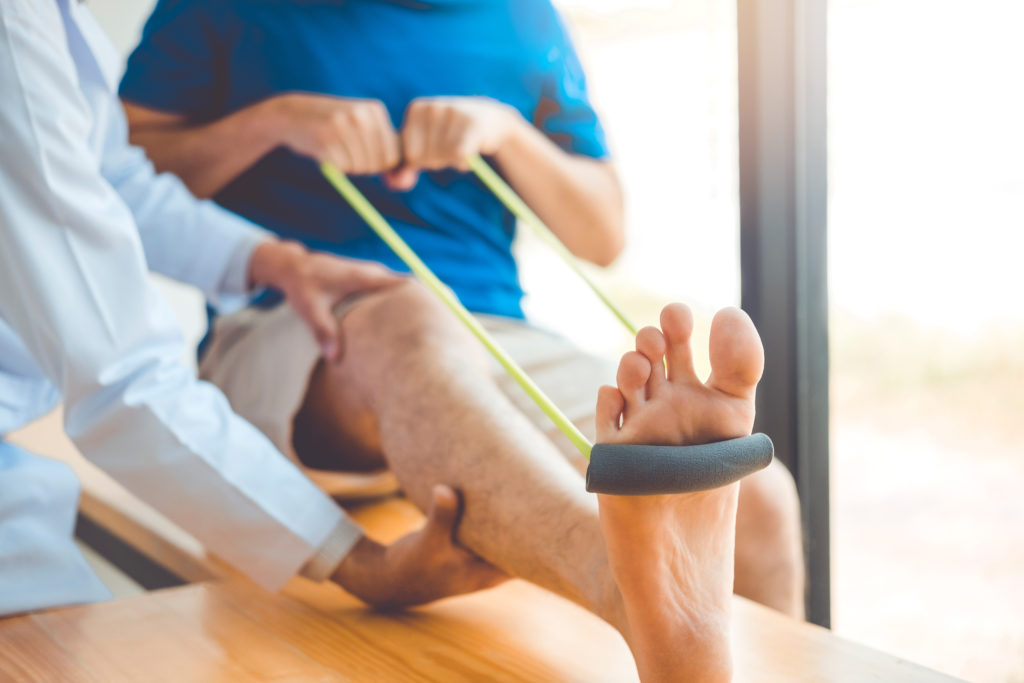Your PT Can’t Do Your Exercises For You

If you’ve been to physical therapy, you likely got a home exercise program. Research says that if you do your home exercise program, you’ll have a significantly better chance of meeting your goals and feeling better. Not doing your program increases the risk of recurrent injury or flare-ups with less positive outcomes long term. Even though they’re important, adherence to home exercise programs is terrible. It’s estimated that only 40 to 50% of patients do their exercises the way they’re supposed to. What gets in the way?
Barriers to Home Exercises
Many of the barriers to PT exercises are the same as barriers to general exercise. These include lack of time, busy work schedules, forgetting, lack of space, lack of equipment, etc. These can be overcome with some forethought and planning, but they regularly stop patients from completing home exercise programs.
Pain and Beliefs
If exercises cause pain, people don’t want to do them. Sometimes people are afraid to report pain from exercise to their PT. Or they think that they’re supposed to hurt. Instead of working with their PT to address the pain, they just stop doing the exercises.
Another thing that gets in the way is people’s beliefs. If people don’t understand why their PT is prescribing certain exercises, or why, the exercises can seem like a waste of time. When that’s the case, again, people stop doing them.
Lack of Support
Social support is shown to significantly improve adherence to exercise. This is why CrossFit and group exercise classes work. People who have a family member, friend, or PT who check in on their exercises are more consistent. Being accountable to someone other than yourself can be a big motivator.
Patients not doing their home exercises is a big problem in physical therapy. Understanding the issues we just discussed can help PTs and patients improve compliance. There are other strategies that PTs are using to help improve compliance as well. So, what can you do to make sure you do your exercises and get the best outcomes? Here are a few ideas.
Plan Ahead
Think about what’s going to get in your way – your schedule, that you’ll forget, or that you don’t have the space or equipment that you need. Once you figure out the problems, come up with solutions. Put your exercises in your schedule, talk to your PT about equipment, or adjusting your program to fit the time you have. If you solve problems before they start, they’re no longer problems.
Address Pain and Beliefs
You’ll need to work with your PT on these. If your exercises cause pain, you’re not going to do them. When your PT prescribes your exercises, try them out. If there’s pain, ask your PT about modifications to make them more comfortable. The other thing might need addressed are your beliefs. If you believe that they won’t help, or that they’re a waste of time, you won’t do them. Again, work with your PT to understand why they’re prescribing those exercises, and what they’re meant to do. Once you know why you’re doing them, you’re more likely to be consistent.
Get Support for Your Exercises
People who have social support are more likely to do their home program. This is why CrossFit and group exercise classes work. Find a family member or friend to help you stay consistent with your exercises. Your PT can help here too. Have someone ask if you’re doing your exercises, and how they’re going. This will keep you accountable and more likely to do them.
Use Technology for Your Exercises
If you like technology and gadgets, they can help you be consistent with your exercises. There are plenty of apps that can track your exercise. Seeing that streak of days you’ve exercised will motivate you not to break it. Smartwatches and activity trackers can fill the same role.
Doing your home exercise program will help you get the most out of PT. With a little planning and a little help, you can make sure you’re one of the 50% of the people who do their home exercises consistently to get the best outcomes.
